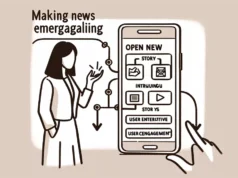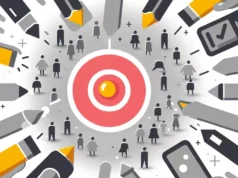In the days before the advent of smartphones, newspapers held a monopoly on information, holding the power to bring about change with their ability to influence public opinion. The television industry disrupted this monopoly, bringing global news right into the living room. But now, as media consumption habits are diversely evolving, social media has emerged as the new source of news. With an estimated 3.96 billion social media users worldwide, it’s no wonder that platforms like Facebook, Twitter, Instagram, and even TikTok have evolved from simple communication means into crucial news distribution channels.
One of the most significant changes brought about social media is the shift from mass communication model, where news was sent in one direction from the voice of authority to the masses, to a model where the audience actively participates in the news process. From Twitter’s trending hashtags to Reddit’s user-voted news, to Facebook Live’s interactive features, social media has changed the dynamics of news creation, distribution, and consumption.
In the past, editors and journalists were the gatekeepers of news. They decided what made headlines, how a story was framed, and, critically, what appealed to the public interest. Social media platforms have shaken this, allowing anyone with internet access to broadcast news. Traditional media outlets are no longer the sole distributors of information. This democratization of media offers consumers the power to dictate what news they consume. While this has often led to enhancing the diversity of perspectives, it has also created an environment where misinformation can rapidly spread.
Social media’s rise has also facilitated real-time updates, breaking the news cycle’s rigid structure. News spreads faster on social media than via any other channel. From eyewitness accounts of unfolding events to official announcements made via tweets, news now travels at the speed of a push notification. This immediacy sometimes comes at the cost of accuracy, underscoring the need for fast and thorough fact-checking.
Notably, social media has thrust opinion-based news into the limelight. This shift from fact-based reporting is partly driven by the ‘like’ and ‘share’ culture on platforms where extreme views often get more traction. This has pushed traditional media outlets to also feature more opinion-driven content to remain competitive.
The emergence of social media polling is another transformation worth noting. Traditional polls have been a mainstay in news, offering insights into public opinion on pressing societal issues. Social media polls, despite their casual nature, offer a demographic that traditional means might not reach out to – a younger, digitally sophisticated audience. While these polls are not scientific and can be manipulated, they offer a new data point in understanding social sentiment.
User-generated content (UGC) is another facet of social media that’s changing the news landscape. Citizen journalism, where ordinary people contribute to the news process, often via social media, has taken precedence. UGC has become mainstream, causing a fundamental shift in news operations from traditional journalism to more crowd-sourced models.
Despite the challenges that come along with social media and news- fake news being the chief concern, there is no denying the powerful impact social media has in modern-day news consumption. It has forced the traditional news industry to adapt to the digital age. To survive in this digital media landscape, publishers must adapt to these new ways of news consumption while committing to fight misinformation.
Undoubtedly, there is a huge potential for leveraging social media’s capabilities in news distribution. The Pandora’s Box of social media brings a wholly different perspective on how we receive our news today. A conversation, a tweet, or an Instagram video can today transform into a news story reaching millions across the globe, making each one potentially a voice of influence. From pings to polls, social media isn’t just a tool anymore, it’s a game-changer.
Sources
– Statista. (2021). Number of social media users worldwide 2021.
– The Reuters Institute for the Study of Journalism (2020). Annual Digital News Report.
– Washington Post. (2019). Social media beating out traditional media as news source, poll shows.
– Knight Foundation. (2018). How Youth Navigate the News Landscape.
– Allcott, H., & Gentzkow, M. (2017). Social Media and Fake News in the 2016 Election. Journal of Economic Perspectives, 31(2), 211–36.
– The Conversation. (2017). Social Media’s influence on public opinion.
– BBC. (2019). Why does video on Facebook get shared more than news stories?
– Pew Research Center. (2020). Understanding the Landscape of U.S. Citizen Journalism.






